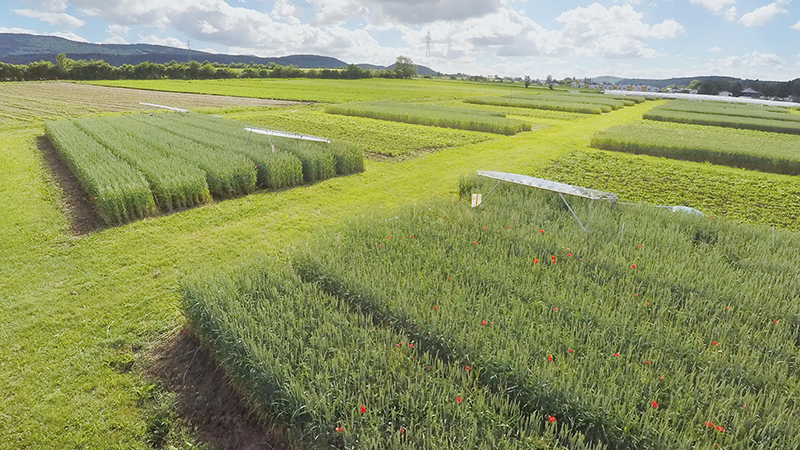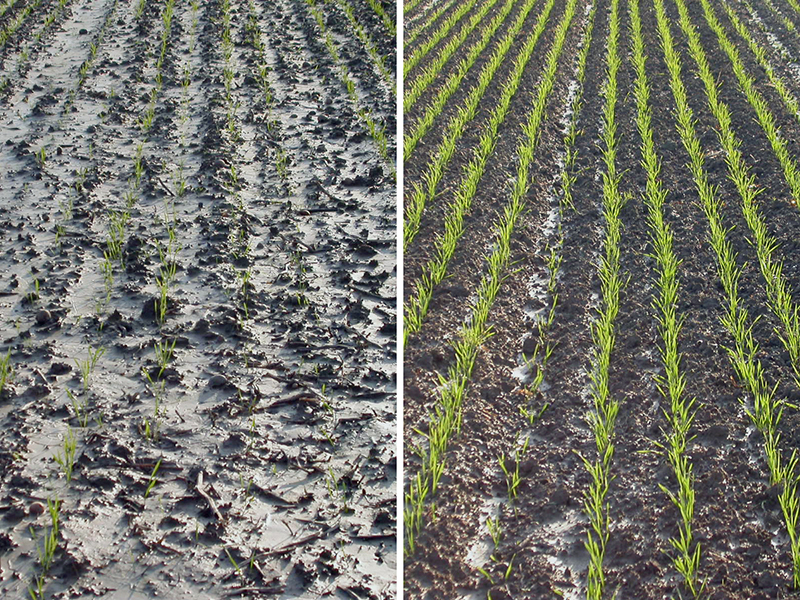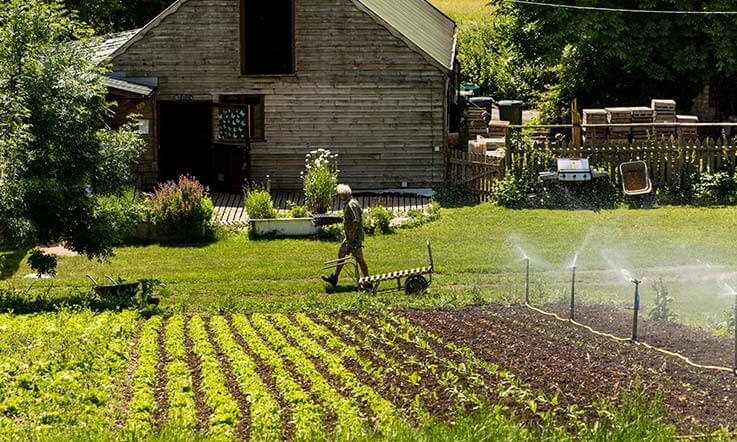
A joint study based on data from 40 years of DOK trials, a globally unique long-term field trial by the Research Institute of Organic Agriculture FiBL in Switzerland and Agroscope confirms that organic farming promotes soil fertility and biodiversity with good yields overall. However, yields still need to be improved for crops such as cereals and potatoes.
Organic farming has characteristics that enable efficient and environmentally friendly production. This is shown by a joint study by FiBL Switzerland and Agroscope in collaboration with ETH Zurich – recently published in the journal Scientific Reports.
“The meticulously collected data from 40 years proves that organic farming promotes biodiversity and soil fertility. It also reduces the risk of negative environmental impacts from pesticides or nitrogen surpluses,” reports Hans-Martin Krause from FiBL, one of the two main authors of the study and co-leader of the trial since 2024.
The study is based on data from a globally unique field trial. This is known as the ‘DOK trial’ and compares the biodynamic (D), organic (O) and conventional (K) cultivation systems in Switzerland. To this end, organic and conventional farming systems have been scientifically compared with each other on a field in Therwil in the canton of Basel-Landschaft since 1978.
The organic soils were found to have 16% higher humus content and up to 83% higher activity of soil organisms, both of which have a positive effect on soil structure. A healthy soil structure helps to store water and reduce soil loss through erosion.
In all systems, manure from livestock farming is crucial for good soil fertility. If it is applied to the field in sufficient quantities, preferably in the form of compost, the humus content remains stable or increases in all systems. However, if, as in one of the conventional systems studied, fertiliser is applied exclusively in the form of synthetic mineral fertiliser, the humus content decreases. On the other hand, the phosphorus content in organic soils decreases more than in conventionally farmed soils due to the lower fertiliser application, which shows the need for phosphorus supply via recycled fertiliser in order to avoid phosphate deficiency in organic farming in the long term.
“It is striking that the biodynamic system performs best in terms of soil fertility, humus formation and climate impact,” says Paul Mäder, co-lead author of the study and long-time co-leader of the DOK trial. “The special feature of this system is the composting of the manure and the use of plant-based preparations.

The long-term data from the DOK trial shows that, on balance, organic systems are efficient. On average, organic systems produce 85 per cent of conventional yields – with only eight per cent biocompatible pesticides and 65 per cent nitrogen input via fertilisers. Nitrogen, in particular, is one of the most important plant nutrients, but also one of the most critical for the environment. Excess nitrogen can end up in groundwater or as greenhouse gases in the atmosphere.
Soya delivers equally high yields in all systems. Small differences in yield are measurable for forage crops such as clover grass and silage maize. The differences are greatest for crops such as wheat and potatoes. Overall, yields fluctuate significantly more in organic systems, which is due to the lower use of fertilisers and pesticides. On the other hand, the risk of pollutants contaminating water, food and animal feed is significantly lower.
The lower use of nitrogen fertilisers is the main factor in the improved climate impact of organically farmed soils. If nitrogenous fertilisers are present in excess in the soil, they are converted by microorganisms into nitrous oxide, which has a high impact on the climate. Organic soils, therefore, produce significantly lower emissions per unit area. However, due to the lower organic yields, the nitrous oxide emissions per product unit are similar to those of conventional systems, except for the biodynamic system. Because organic soils store more CO2 in the humus, the climate impact is further improved.
In summary, the study shows that organic farming offers a viable basis for the further development of sustainable farming systems that balance food production and environmental impact.
“The potential for the further development of organic farming lies above all in closing inter-farm nutrient cycles and making significant progress in plant breeding,” says Jochen Mayer, a scientist at Agroscope and co-leader of Agroscope’s DOK trial. “This includes the recycling of phosphorus and nitrogen, for example, from food waste or wastewater. We also recommend diversification strategies in plant cultivation, such as mixed crops, undersown crops or strip cropping, ideally with perennial crops.”
Krause HM, Mäder P, Fliessbach A, Jarosch KA, Oberson A, Mayer J (2024) Organic cropping systems balance environmental impacts and agricultural production. Scientific Reports 14, 25537. https://doi.org/10.1038/s41598-024-76776-1
Detailed dossier on the results of 45 years of DOK trials: https://www.fibl.org/de/shop/1741-dok-dossier-en
